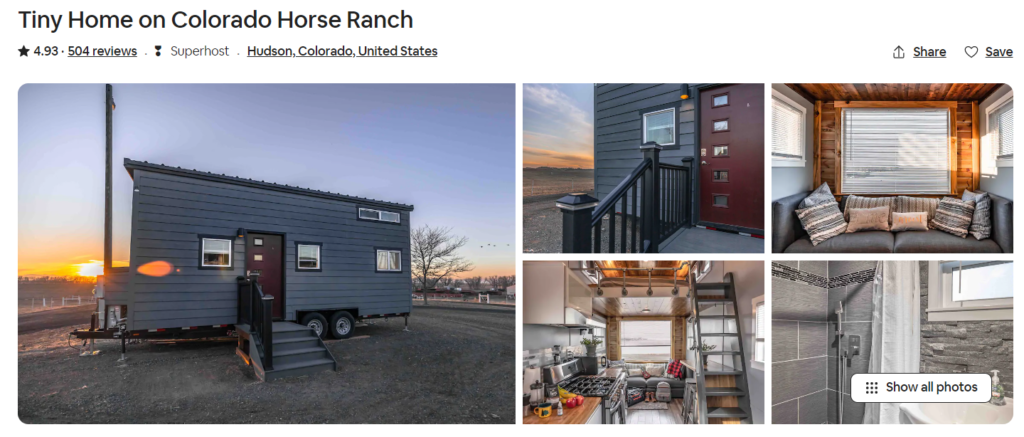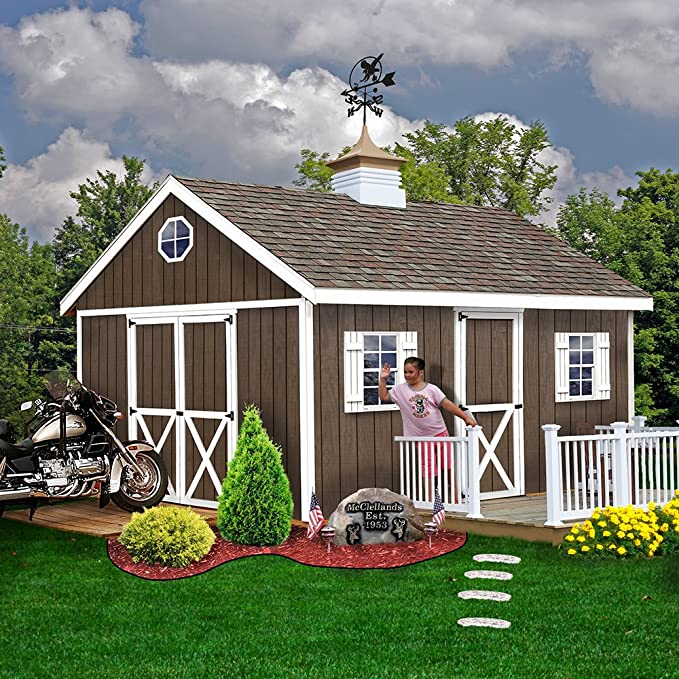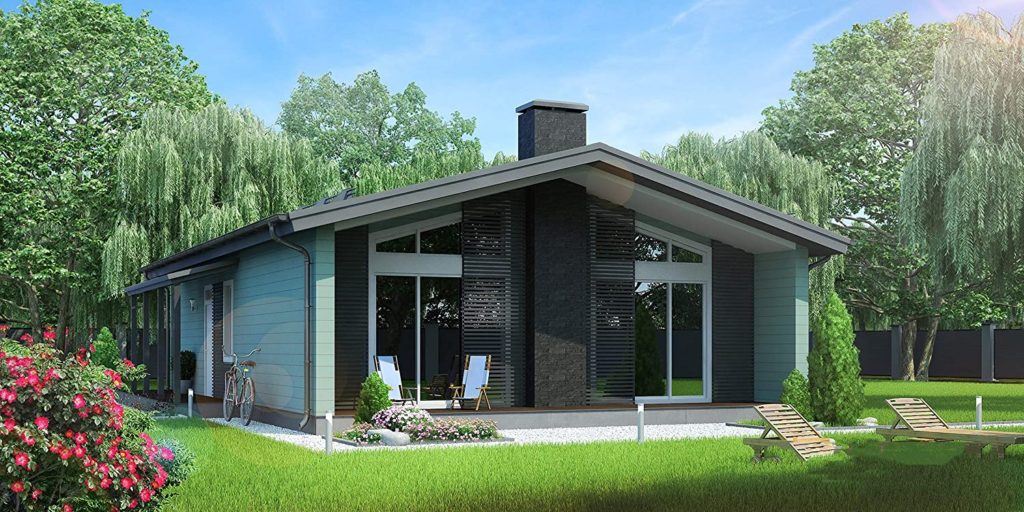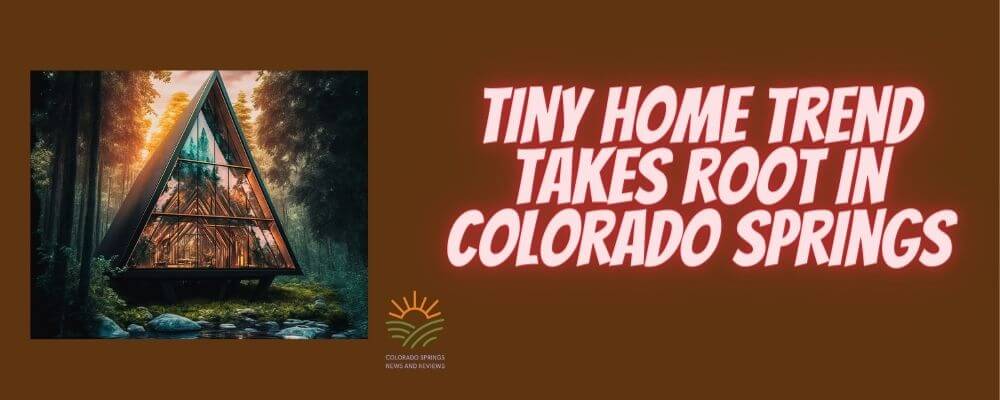In recent years, the tiny home trend has been gaining popularity across the United States, and Colorado Springs is no exception. The Rocky Mountain state is well-suited to this lifestyle, with its stunning natural landscapes, a culture of outdoor adventure, and a growing interest in sustainable living. As a result, Colorado Springs has become a hub for the tiny home movement, with many people opting for a simpler, more minimalist lifestyle.
So what exactly is a tiny home? Typically, a tiny home is a house that is less than 400 square feet in size, although some can be as small as 100 square feet. They are often built on trailers, allowing them to be mobile and easily transported from one location to another. They come in a variety of shapes and styles, from rustic cabins to sleek modern designs.
One of the key benefits of tiny homes is affordability. With a lower cost of construction and maintenance, tiny homes can provide an affordable housing option for those who might not be able to afford a traditional home. In addition, many tiny homes are built with energy-efficient materials and systems, which can save money on utilities over time.
Another benefit of tiny homes is their environmental sustainability. By using fewer materials and consuming less energy, tiny homes have a smaller carbon footprint than traditional homes. They are also often built with sustainable materials, such as reclaimed wood and recycled materials.
Earlier this year we visited a tiny home AirBnB near Peyton, Colorado, not far from the Springs. It was so tiny but practical, with loft sleeping for up to 4 and a perfect tiny kitchen. The location was on a horse ranch, and you could visit with the horses in the mornings. Here’s a link!

Colorado has embraced the tiny home trend in a big way, with several communities and developments dedicated to this lifestyle. One of the most well-known is WeeCasa, a tiny home resort located in Lyons, Colorado. WeeCasa features a variety of tiny homes available for rent, allowing visitors to experience the tiny home lifestyle without committing to it full-time.
Another notable tiny home development is the Escalante Village in Durango, Colorado. This community is made up of 23 tiny homes, each with its own unique design and layout. The development is focused on sustainability, with features like rainwater harvesting, solar panels, and composting toilets.
In addition to these communities, many people in Colorado Springs are building their own tiny homes on their own land. This allows them to live off the grid and be completely self-sufficient. While building your own tiny home may require more effort and resources upfront, it can provide a sense of freedom and independence that traditional homes may not offer.
If you aren’t quite ready for a complete tiny home, how about this cool shed?

If you’re thinking about building a tiny home in Colorado, there are some steps you should take. Here are some tips to help you get started:
- Check Local Regulations: The first step in preparing your Colorado property for a tiny home construction is to check local regulations. Zoning laws, building codes, and other regulations can vary from town to town and county to county. You’ll need to make sure you’re following all the rules and obtaining any necessary permits before you start building.
- Assess the Site: Once you’ve verified that your property is zoned for a tiny home, you’ll need to assess the site. Look for a location that is flat and dry, and make sure there is adequate space for your tiny home and any associated structures, such as a septic system, well, or driveway.
- Utilities: Depending on the location of your property, you may need to install utilities such as electricity, water, and sewer. This will likely require some coordination with local utility companies and may involve a cost.
- Soil Testing: Before you start building, it’s important to test the soil to ensure it’s stable and suitable for a foundation. A soil test can help you determine the type of foundation that will work best for your tiny home and the soil conditions of your property.
- Design the Home: Once you’ve taken care of the site preparation, you can begin designing your tiny home. Consider factors such as the size of the home, the layout, and any special features you want to include, such as a loft or solar panels.
- Hire a Contractor: Building a tiny home requires specialized skills and experience, so it’s a good idea to hire a contractor who has experience with tiny home construction. They can help you with the design, planning, and construction process, and ensure that your home is built to code.
- Prepare the Foundation: Once you’ve designed your home and hired a contractor, you can begin preparing the foundation. This may involve pouring a concrete slab or constructing a pier and beam foundation, depending on the soil conditions and the type of home you’re building.
- Start Building: With the foundation in place, you can begin building your tiny home. Your contractor will oversee the construction process and ensure that everything is done according to plan and to code.
- Finishing Touches: Once the construction is complete, you can add the finishing touches to your home. This may include painting, landscaping, or installing fixtures and appliances.
Here is a list of cities and counties where you can own a tiny home according to local rules and regulations. Not every jurisdiction allows you to live in a tiny home, some you can use like an RV or camping vehicle. Be sure to contact your own city or county planning department directly, and have them look up your specific parcel number or property location before investing in the process of creating a tiny home.
- El Paso County
- Park County
- Walsenburg town
- Salida town
- Escalante Village in Durango
- Denver
- Aurora
- Boulder
- Colorado Springs
- Aspen
- Fort Collins
Beware of Mistakes People Make When Building a Tiny Home in Colorado Springs
Tiny homes have become increasingly popular in recent years, thanks to their affordability and eco-friendliness. However, building a tiny home is not as easy as it seems, and many people make mistakes that can be costly in the long run.
Not Planning for Enough Space
One of the biggest mistakes people make when building a tiny home is not planning for enough space. While the idea of living in a tiny home can be exciting, it’s important to remember that it’s still a home, and you need enough space to live comfortably. Many people make the mistake of building a tiny home that is too small, which can lead to cramped living quarters and a lack of storage space.
Ignoring Local Zoning Laws
Another mistake people make when building a tiny home is ignoring local zoning laws. Before you start building, it’s important to check the local regulations to ensure that you’re allowed to build a tiny home in your area. Some areas have strict regulations on the size and type of homes that can be built, so it’s important to do your research beforehand.
Not Hiring a Professional Builder
Building a tiny home is not a DIY project that you can do on your own. Many people make the mistake of trying to build a tiny home themselves, which can lead to costly mistakes and unsafe living conditions. It’s important to hire a professional builder who has experience building tiny homes and can ensure that your home is built to code.
Overlooking the Importance of Insulation
Insulation is crucial when it comes to building a tiny home. Many people overlook the importance of insulation, which can lead to a home that is too hot in the summer and too cold in the winter. Proper insulation can help you save on energy costs and keep your home comfortable year-round.
Choosing the Wrong Location
Location is key when it comes to building a tiny home. Many people make the mistake of choosing a location that is not suitable for a tiny home. For example, if you’re planning to live off-grid, you need to make sure that you have access to water, electricity, and other basic necessities. Choosing the wrong location can make it difficult to live comfortably in your tiny home.
Building a tiny home can be an exciting and rewarding experience, but it’s important to avoid these common mistakes. Planning for enough space, following local zoning laws, hiring a professional builder, insulating properly, and choosing the right location are all important factors to consider when building a tiny home. By avoiding these mistakes, you can ensure that your tiny home is a safe, comfortable, and enjoyable place to live.
Of course, the tiny home lifestyle is not for everyone. Living in a small space requires a certain mindset and a willingness to let go of material possessions. It also requires careful planning and consideration of one’s needs and priorities. However, for those who are drawn to the simplicity and sustainability of the tiny home lifestyle, the greater Colorado Springs region offers a welcoming community and plenty of opportunities to make it a reality.
The tiny home trend seems to be here to stay in Colorado Springs, offering an affordable, sustainable, and minimalist lifestyle for those who are drawn to it. With its stunning natural landscapes, a culture of outdoor adventure, and a growing interest in sustainable living, Colorado Springs is the perfect place to embrace the tiny home lifestyle.
If you can’t wrap your arms around a tiny home, I found this relatively awesome looking pre-fab 1400 SF DIY cabin!!

